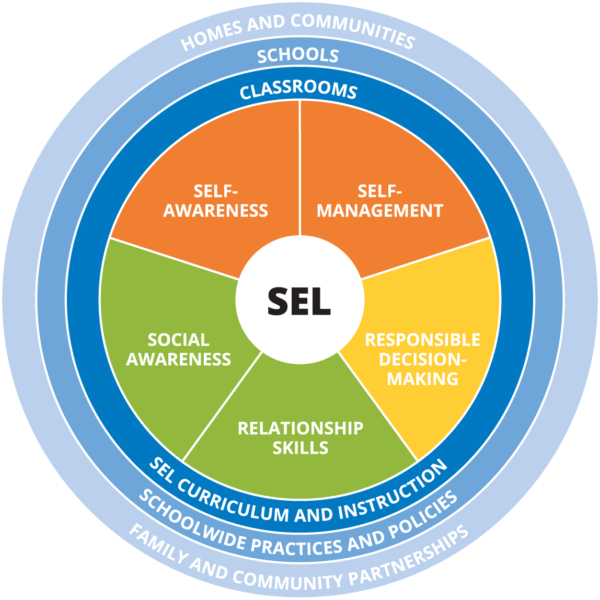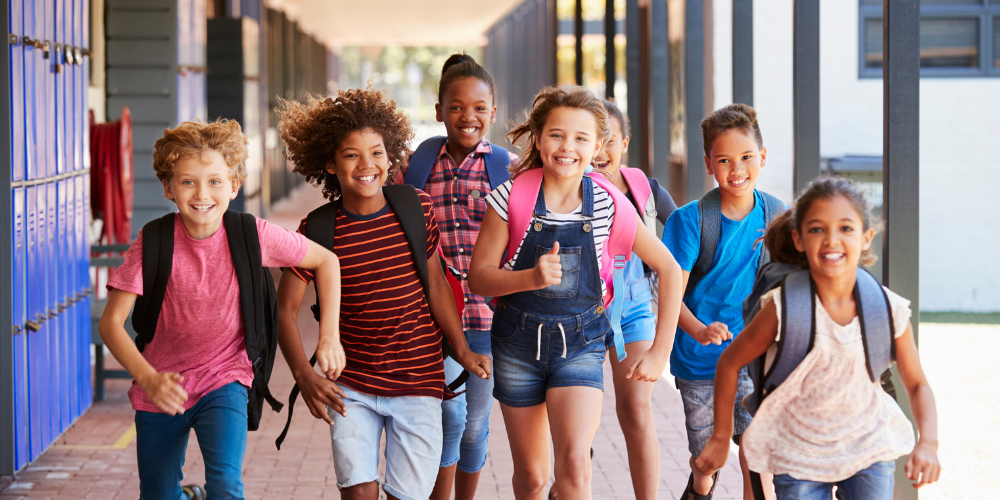Going back to school is an exciting time for students and teachers! Picking out your first-day-of-school outfit, the smell of Crayola crayons, and meeting new friends! In addition to excitement, returning to school can also bring anxiety and angst. Here are three things teachers can focus on to ease students back into the brick & mortar schoolhouse.
- Help Students Manage Anxiety
“Camp, Sheila’s, camp, Sheila’s, then Nana & Papa’s?!” This is what 5 year old Leo recited as a way to predict and affirm what was ahead of him. His typical schedule–spent at Grandma Sheila’s and Nana & Papa’s houses–was disrupted because of summer camp, so he looked for reassurance by identifying where he would be each day of the week.
What causes students to have anxiety and what relieves it? To relieve and reassure students who are managing anxiety, we can create routines, post schedules, and practice things that are new.
Routines: One tried-and-true routine teachers rely on to ease anxiety and get the day started is the Morning Meeting. Morning Meetings provide structure for greetings, opportunities for sharing, and time for communicating about the plan for the day.
If Morning Meetings are new to you, or you are looking to refresh your current Morning Meeting structure, these resources provide ideas:
- Morning Meeting Ideas from Pinterest
- “Creating a Culture of Trust and Safety” from Edutopia
- Morning Meetings from Learning for Justice
Schedules: Relieving fear of the unknown by letting children know “what comes next” creates predictability and confidence. To do so, teachers can post schedules for students to reference and can discuss the day’s schedule. Even young students who aren’t yet reading can follow the day’s plan through pictures posted on a daily and weekly schedule.
Practice: Like anything new, it is helpful to practice! In fact, in Malcolm Gladwell’s book, Outliers, he explains that to master a skill, we should commit 10,000 hours.
Most of us don’t have 10,000 hours to practice, but even a few minutes spent with students can be immensely helpful. The thought of using a combination to open a locker, having only 20 minutes to eat lunch, or finding classrooms can cause angst. But practicing unlocking the lock, measuring the time it takes to eat lunch, and walking from class-to-class creates muscle memory, builds confidence, and relieves anxiety.
- Connection in the Classroom
Whether you are a preschooler or an administrator, beginning a new school year feels exhilarating! However, some students arrive at school not knowing others because they’re new to the community, have switched schools, or haven’t seen their friends over the summer. Regardless of the reasons, it is wise to assist students in making connections! Here are some ways:
Games
One way to create connections is through games. Students can get to know and learn about each other, all in a party-like atmosphere!
- “Getting to Know You Games,” from Pinterest
- “25 Meaningful Icebreakers for Middle and High Schoolers that Really Work,” from We Are Teachers
- “25 Elementary Icebreakers to Start the Year Off Right,” from We Are Teachers
Mentor-Mentee and Peer-to-Peer
Mentor and mentee relationships are a good way for students (and teachers!) to learn from one another. The term mentor-mentee implies one person is more knowledgeable or more experienced than the other–and typically this is true.
Peer-to-peer relationships are meant to be equal with the intent to learn from each other, complete projects together, or to provide guidance and tutoring. Regardless, each duo is designed with a dose of security for situations that may feel challenging or new.
Some schools use programs like “LINK” to connect students–particularly when they are moving from elementary to middle or middle to high school. These partnerships are tremendously useful for students with disabilities or for students whose first language is not English. Examples of programs that promote unity and mentoring are described below:
- “LINK Crew,” from Eagan High School
- “6 Teacher Tips for Mentoring Elementary Students,” from Summit Learning
- “Peer Mentorship Program,” from Hopkins Public Schools
- “Mentoring Youth with Disabilities,” from the U.S. Department of Labor
- “Peer Mentoring Can Strengthen Connection Between English Learners and Classroom Community,” from K12Dive
- Social-Emotional Learning
Back in the day, we called SEL “team building,” or “character education.” Regardless of what it’s called, improving social-emotional learning means students are having a better experience in school, at home, and in life.

As you can see in the SEL wheel above from CASEL, social-emotional learning is a community, school, and classroom collaboration. When all stakeholders ensure students are learning self-awareness, self-management, social awareness, relationship skills, and responsible decision making-everybody wins!
These resources provide ideas for adding SEL into your day:
- “Key Elements of SEL Implementation,” from Edutopia
- “How SEL is Showing Up in Schools,” from Safe, Supportive Learning
- “26 Ways to Integrate SEL Throughout the Day” from We Are Teachers
As you head back to the classroom, we know that helping to manage student anxiety, creating connections, and social-emotional learning will take you a long way to ensuring students’ transitionwill go smoothly.
We know students will be happy to see you! Have a great year!
Get your teaching toolkit ready for the new school year with our 3-course Back-to-School SEL Bundle:
Course 5102: Anxiety Awareness
Course 5203: Social and Emotional Learning Starts with You
Course 5109: Connection in the Classroom







